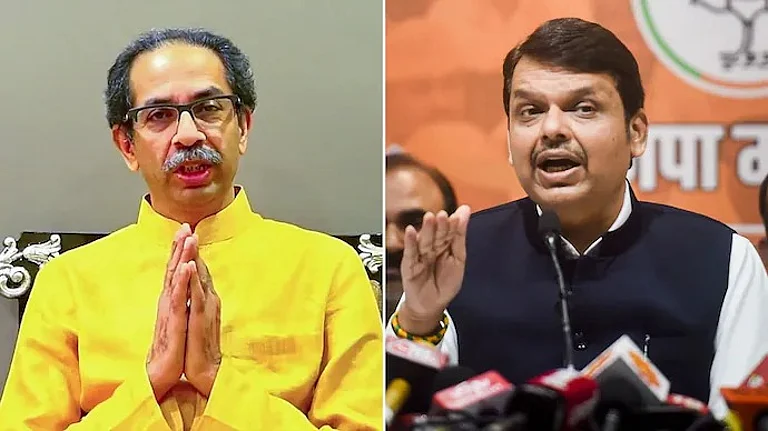In the deep waters of Dal Lake, amid beeps and hustle and bustle, the grim face of a houseboat owner seeks answers from his reflection.
The flashes of night that charred down dreams and destinations still haunt this old-looking young soul.
In the once-heavenly-looking landscapes, ash-filled air, charcoal-mixed water, and the smell of destruction welcome visitors now.
Mohammad Shafi, a houseboat owner, has been carrying on the legacy left behind by his forefathers of running a houseboat business since childhood. His forefathers were engaged in this business since British rule in Kashmir. However, on the night of November 11, a fire occurred in one of Shafi’s neighbouring houseboats. From spectator to victim, Shafi witnessed this transition in no time.
“The fire started with a nearby houseboat and, within minutes, shifted into ours,” recalls Shafi while looking towards his burnt houseboat.
Shafi, along with other houseboat owners and family members, tried to control the fire, but before they could do it, it had already damaged five residential huts and five houseboats.
In this incident, three Bangladeshi tourists also died, and property worth crores was also damaged.
“No one helped us; I just got a 15000 rupee cheque from the Tahsil Office, nothing else,” he adds in a state of despair.
The loss of livelihood is not the only thing concerning this soul. How he will reconstruct his houseboat is the main thought playing in Shafi’s head.
“The long process of applying to renovate our houseboat is really difficult; we have to go door to door for years before we get permission to do it,” he says in a thoughtful voice.
In the other corner of Dal Lake lives a master artisan who would once rule the houseboat carpentry art.
Gulam Rasool Najar, in his eighties (81), was in his second class when he left his studies and started working as a carpenter.
Rasool learned the art of making houseboats from his father, as houseboat making has been their ancestral practice. Rasool, sitting in one of the rooms of his house on a chilly winter afternoon, recalls how this industry used to flourish in his time.
“When I was young, the distance between two houseboats used to be around 20–30 feet. But now, the distance is lessening day by day, unlike my health issues, which keep growing.”
Rasool had to give up on this art because of his ailing health. Resonating with the idea of Shafi, Rasool sees the ban on the renovation of houseboats as one of the major factors in the death of this industry.
“If I get the opportunity to re-establish my houseboat, I won't be able to do it, as the timber used to make these houseboats is very limited and expensive. The timber that is used in the houseboats is deodar,” says Shafi, who dreams of rebuilding his houseboat.
Shafi, who presently lives with his relatives, wonders if he could ever build his business again. “I’m not the only one suffering; along with my family, there are other employees who were dependent on my houseboat.”
Online reports suggest that in the last four decades, the number of houseboats has reduced from 2000 to 750 in Kashmir.
According to Manzoor Ahmad Pakhtoon, Chairman of the Kashmir Houseboat Owners Association, as the houseboat needs to float on water, it needs waterproofing every year. But, due to back-to-back lockdowns because of COVID-19 and the abrogation of Article 370, the tourism sector witnessed a steep downfall, resulting in the loss of houseboat owners.
“Houseboat owners couldn't afford the maintenance without earning; running the daily household expenses was difficult. Most houseboat owners used to continue without maintenance, which ultimately resulted in houseboat damage. Many houseboats also got damaged in fire incidents in all these years. The non-availability of government compensation policies has also affected the houseboat count in Kashmir.”
After the Valley was stripped of its semi-autonomous status, Kashmir witnessed a huge economic crunch. As per a report, Kashmir had suffered a loss of Rs 17,878 crore after four months of the abrogation of Article 370. Among many other sectors, the tourism sector witnessed a direct hit. This was mainly because of the lower number of tourists visiting the valley. Many countries had also issued travel advisories, terming the visit to Kashmir ‘dangerous’.
Here, in the charcoal-filled waters of the Dal, Shafi says that he can only rebuild his houseboat if he gets timber at subsidised rates and timely permission to carry out construction work.
In 1988, the Farooq Abdullah-led administration banned the building of new houseboats and the repair and renovation of the existing ones in Kashmir due to pollution concerns.
“If the government has put a blanket ban on houseboats, citing pollution concerns in Dal Lake, why doesn’t the government come up with a waste management solution? ” asks Shafi, in an irritated voice.
Another concern for him is the dearth of skilled craftsmen like Rasool. As per Rasool, he is one of the last four or five craftsmen alive. Rasool, the master in the body-making of houseboats, speaking in a low tone, says the reasons behind the unavailability of houseboat craftsmen in these times are many, but the main and key reason is the lower profits and the blanket ban on the construction of new houseboats in Kashmir.
“When there is a blanket ban on the construction of houseboats, why will some new and young men learn this art of mastery? How will he earn money out of it?” asks Rasool.
As the blanket ban on the construction of new houseboats affected the livelihood of the people, Rasool recalls how the houseboat landscape changed in Kashmir. "Earlier, the houseboat used to be 125 feet long with three bedrooms, then 130 feet long with four bedrooms, and now people in Nigeen Lake are making two-story houseboats. It's trending now.”
Shafi recalls one of his acquaintances while collecting things from his houseboat. “Fire is not the only danger. We are also afraid of the surreal-looking water. One of my friend’s houseboats got sunk in the Jhelum River.”
During the intervening night of September 15–16 this year, a residential houseboat got sunk. While sleeping along with his wife and four children, Abdul Khaliq Gura, 74, had a close encounter with death.
“Once the King of our own kingdom, I feel like a beggar now,” says Khaliq, who now lives in a makeshift tent on a roadside.
“There is a process for the reconstruction of houseboats, whether they are gutted into fire or if they sink. The process in itself is long and time-consuming. For those who lose their home or livelihood to any incident, it takes them almost a year to get permission. Where will they go until they get permission to rebuild it?” asks Pakhtoon.
On the cold winter evening in Kashmir, on the bund on the river Jhelum, Khaliq's wife Fareeda is loading the essentials and belongings into the truck and preparing to shift to rented accommodation.
With eyes full of tears, Fareeda says that if the government will provide them compensation, only then can they again live in a home. Otherwise, they have to live in rented accommodations for the rest of their lives.
While the tales of Shafi and Khaliq revolve around the same plot, the duo carries on to live in the present state with only one thought in mind: will they ever be able to live a normal life?
(Umar Farooq is a multimedia journalist based in Kashmir. Kaisar Ali is a multimedia journalist based in Kashmir.)





















